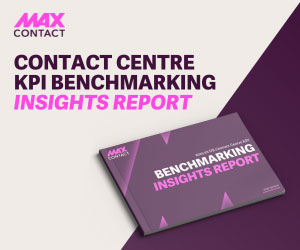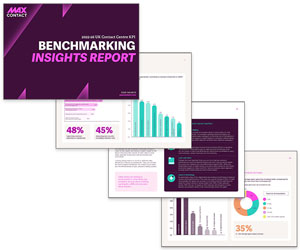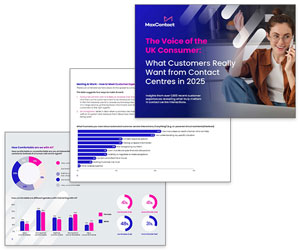Dialler systems help contact centres manage outbound calls efficiently.
Choosing the right type of dialler depends on factors like connect rates, compliance requirements, and data value.
To find out more, we asked Ben Booth, CEO at MaxContact, to explain the three main types of diallers and when to use each one.
Video: What Are the Different Types of Dialler and What Should Each Be Used For?
Watch the video below to hear Ben define the different types of dialler and explain what each should be used for:
With thanks to Ben Booth, CEO at MaxContact, for contributing to this video.
The Three Main Types of Diallers
“There are three types of dialler that we traditionally see. There is predictive dialling, progressive and power is the same, it has two names in the industry, and preview dialling.”
By understanding the strengths of each of these three dialler types, contact centres can improve efficiency, stay compliant, and maximise call success rates:
1. Predictive Dialling
Predictive dialling is ideal for environments with low connect rates, where agents are unlikely to reach a high number of live customers, as Ben explains:
“Typically, you use predictive dialling in a low-connect-rate environment where you’re not expecting as many answers.
So typically, less than 20%, and that allows you to increase the efficiency of the agent by reducing the average wait time between calls and introducing technologies.
This system increases efficiency by reducing wait times between calls, using algorithms to predict agent availability and dial multiple numbers at once.
2. Progressive/Power Dialling
Often referred to as progressive or power dialling, this system works at a 1-to-1 line ratio, meaning it dials one number per available agent.
It provides a balance between efficiency and compliance, making it useful in low-connect-rate B2B environments or where data is of higher value and requires more control over dialling.
“Progressive and power, as it is known, is similar, but it tends to be restricted to a 1-to-1 line ratio. So it is usually fully compliant, and it allows you to have a cross between the predictive and the preview where you still need some of the efficiencies, but not as much of the performance.
And that’s typically stored in either low-connect-rate B2B environments or where the data is of higher value.”
3. Preview Dialling
Preview dialling is best suited for high-value B2B calls or situations where agents need time to review customer details before placing a call.
“And that then leads us on to preview dialling, which is seen as normally B2B or very high value data whereby the record or information pops up to the agent and it places almost a manual dial for that agent.
So, all it does is remove the need to type the number in and press go and speeds up productivity slightly.”
The system displays the customer’s information before dialling, allowing the agent to prepare before making contact. It removes manual dialling but still offers a controlled, personalised approach.
If you are looking for more great insights from the experts, check out these next:
- Key Steps to Map Customer Journeys
- Understanding Customer Experience (CX)
- Emotional Motivators and Their Impact
- How to Use Personas in Customer Journey Mapping
Author: Robyn Coppell
Reviewed by: Hannah Swankie
Published On: 29th Nov 2022 - Last modified: 25th Sep 2025
Read more about - Video, Ben Booth, Call Handling, Dialler, MaxContact, Videos

















